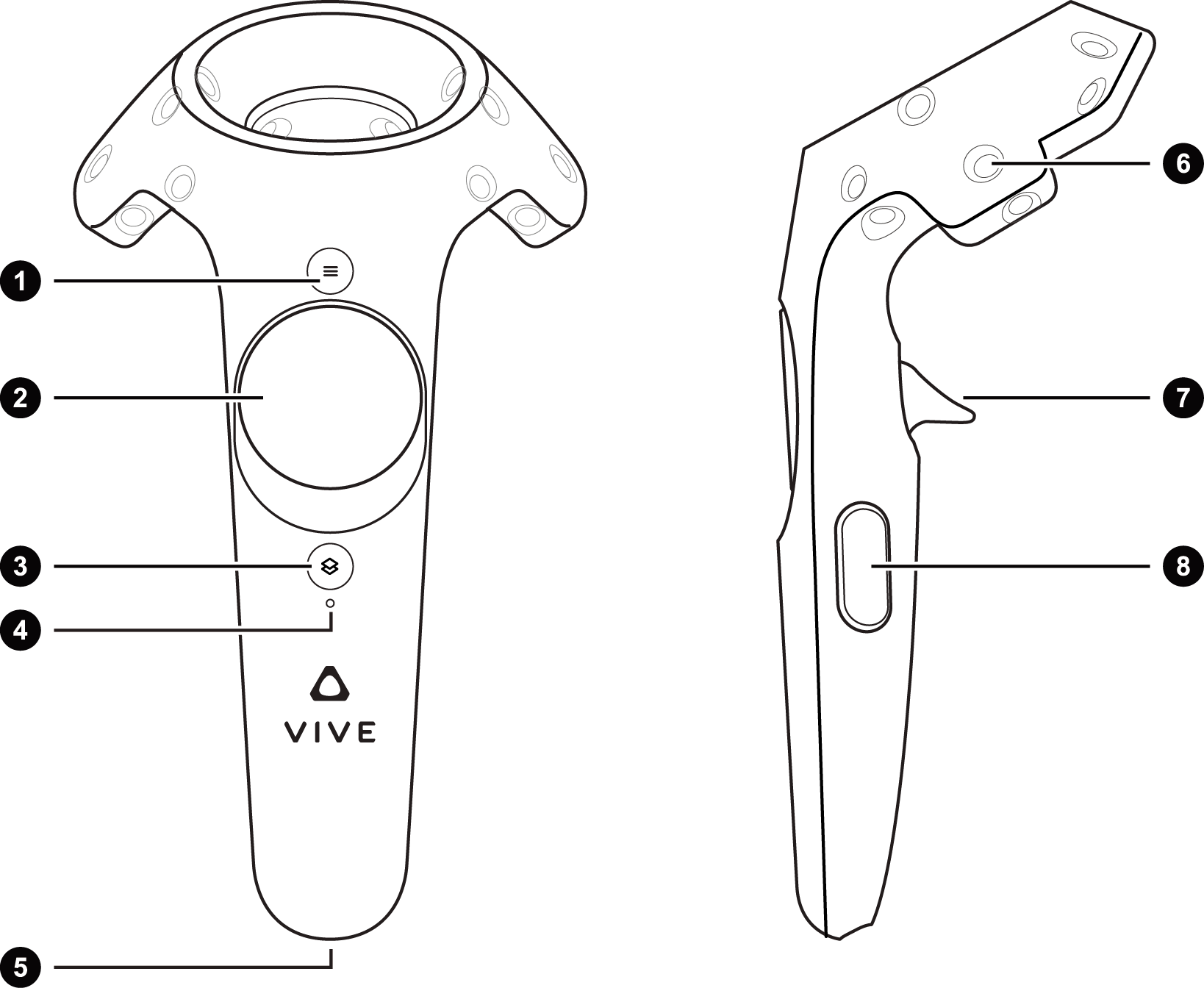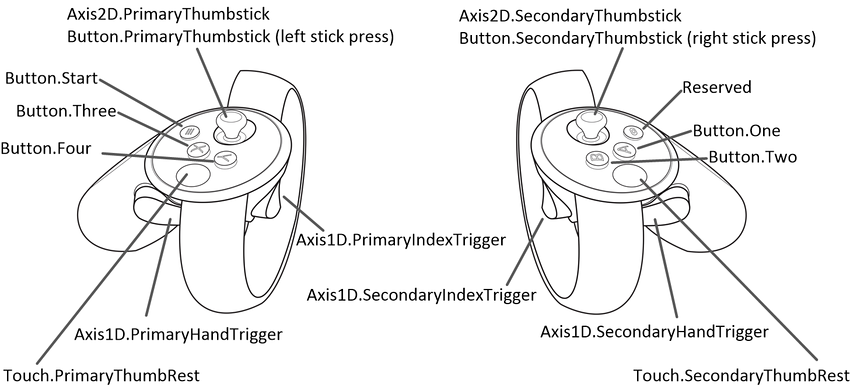手册
- Unity User Manual (2017.1)
- 在 Unity 中操作
- Basics
- 资源工作流程
- 主要窗口
- 创建游戏玩法
- 编辑器功能
- 高级开发
- Editor 高级主题
- 许可证和激活
- 升级指南
- 2D
- 图形
- 图形概述
- 光照
- 摄像机
- 材质、着色器和纹理
- 纹理
- 创建和使用材质
- 标准着色器
- 通过脚本访问和修改材质参数
- 编写着色器
- 旧版着色器
- 内置着色器的用途和性能
- 普通着色器系列
- 透明着色器系列
- 透明镂空着色器系列
- 自发光着色器系列
- 反光着色器系列
- 反射顶点光照 (Reflective Vertex-Lit)
- 反光漫射 (Reflective Diffuse)
- 反光镜面反射 (Reflective Specular)
- 反光凹凸漫射 (Reflective Bumped Diffuse)
- 反光凹凸镜面反射 (Reflective Bumped Specular)
- 反光视差漫射 (Reflective Parallax Diffuse)
- 反光视差镜面反射 (Reflective Parallax Specular)
- 反光法线贴图无光照 (Reflective Normal Mapped Unlit)
- 反光法线贴图顶点光照 (Reflective Normal mapped Vertex-lit)
- 视频概述
- 地形引擎
- Tree Editor(树编辑器)
- 粒子系统
- 后期处理概述
- 反射探针
- 集群渲染
- 高级渲染功能
- Procedural Materials
- 程序化网格几何体
- 优化图形性能
- 层
- OctaneRender
- 图形参考
- 摄像机参考
- 着色器参考
- 粒子系统参考
- 粒子系统 (Particle System)
- 粒子系统模块
- 粒子系统 (Particle System) 主模块
- Emission 模块
- 粒子系统 Shape 模块
- Velocity Over Lifetime module
- Noise 模块
- Limit Velocity Over Lifetime 模块
- Inherit Velocity 模块
- Force Over Lifetime 模块
- Color Over Lifetime 模块
- Color By Speed 模块
- Size over Lifetime 模块
- Size by Speed 模块
- Rotation Over Lifetime 模块
- Rotation By Speed 模块
- External Forces 模块
- Collision 模块
- Triggers 模块
- Sub Emitters 模块
- Texture Sheet Animation 模块
- Lights 模块
- Trails 模块
- Custom Data 模块
- Renderer 模块
- 粒子系统(旧版,3.5 版之前)
- 视觉效果参考
- 网格组件
- 纹理组件
- 渲染组件
- 渲染管线详细信息
- 精灵渲染器 (Sprite Renderer)
- 图形操作方法
- 图形教程
- 图形概述
- 物理系统
- 脚本
- 多玩家和联网
- Networking Overview
- Networking Reference
- NetworkAnimator
- NetworkBehaviour
- NetworkClient
- NetworkConnection
- NetworkDiscovery
- NetworkIdentity
- Network Lobby Manager
- Network Lobby Player
- NetworkManager
- Network Manager HUD
- Network Proximity Checker
- NetworkReader
- NetworkServer
- NetworkStartPosition
- NetworkTransform
- NetworkTransformChild
- NetworkTransformVisualizer
- NetworkTransport
- NetworkWriter
- 音频
- 动画
- 动画系统概述
- 动画剪辑
- Animator Controllers
- 重定向人形动画
- Performance and Optimization
- Animation Reference
- Animation HOWTOs
- Playables API
- 动画术语表
- 时间轴
- UI
- 导航和寻路
- Unity 服务
- 设置项目启用 Unity 服务
- Unity Ads
- Unity Analytics
- Unity Cloud Build
- Unity IAP
- 设置 Unity IAP
- 跨平台指南
- 应用商店指南
- 实现应用商店
- Unity Collaborate
- Unity Performance Reporting
- Multiplayer 服务
- Virtual Reality
- 开源代码仓库
- Asset Store 发布
- 特定于平台的信息
- 独立平台
- Apple Mac
- Apple TV
- WebGL
- iOS
- Android
- 三星电视
- Tizen
- Windows
- Web 播放器
- 移动平台开发者检查清单
- 实验性
- 旧版主题
- 最佳实践指南
- 专家指南
- Unity 2017.1 中的新功能
- Unity User Manual (2017.1)
- 在 Unity 中操作
- 创建游戏玩法
- 输入
- VR Input
- Input for OpenVR controllers
Input for OpenVR controllers
To facilitate Unity Editor native support for tracked controllers supported by OpenVR, the Unity VR subsystem presents VR controller inputs as separate joysticks. You can access their axis and button values with the UnityEngine.Input class.
By using OpenVR’s controller abstraction, the Unity Editor presents axis and button states in a hardware-agnostic approach (that is, it doesn’t refer to any specific hardware, but uses generic terms). However, for the sake of clarity, the axis and button mappings given below are for the two supported controller types: the HTC Vive controllers, and the Oculus Touch Controllers.
命名约定和检测
When properly configured and connected, a pair of Oculus Touch Controllers or a pair of HTC Vive controllers appear in the list returned by UnityEngine.Input.GetJoystickNames() as OpenVR Controller - Left and OpenVR Controller - Right. When available, these controllers appear highlighted in green in the SteamVR status window.
Unity script code can test for the availability of these controllers by periodically checking for their presence in the list of joystick names. When the controllers are turned off or have their batteries removed, an empty string replaces their name in the list returned by UnityEngine.Input.GetJoystickNames(). When the controllers are turned on again, their name appears in the list of returned joysticks.
Unity Input system mappings
Diagram of Vive controllers

Diagram of Oculus Touch Controllers

| Vive Controller Hardware Feature | Touch Controller Hardware Feature | 交互类型 | Unity 按钮 ID | Unity 轴 ID | Unity 轴值范围 |
|---|---|---|---|---|---|
| 左控制器菜单按钮 (1) | Button.Three | 按压 | 2 | ||
| 右控制器菜单按钮 (1) | Button.One | 按压 | 0 | ||
| 左控制器触控板 (2) | Button.PrimaryThumbstick | 按压 | 8 | ||
| 右控制器触控板 (2) | Button.SecondaryThumbstick | 按压 | 9 | ||
| 左控制器触控板 (2) | Button.PrimaryThumbstick | 触控 | 16 | ||
| 右控制器触控板 (2) | Button.SecondaryThumbstick | 触控 | 17 | ||
| 左控制器触控板 (2) | Axis2D.PrimaryThumbstick | 水平移动 | 1 | –1.0 到 1.0 | |
| 左控制器触控板 (2) | Axis2D.PrimaryThumbstick | 垂直移动 | 2 | –1.0 到 1.0 | |
| 右控制器触控板 (2) | Axis2D.SecondaryThumbstick | 水平移动 | 4 | –1.0 到 1.0 | |
| 右控制器触控板 (2) | Axis2D.SecondaryThumbstick | 垂直移动 | 5 | –1.0 到 1.0 | |
| 左控制器触发器 (7) | Axis1D.PrimaryIndexTrigger | 触控 | 14 | ||
| 右控制器触发器 (7) | Axis1D.SecondaryIndexTrigger | 触控 | 15 | ||
| 左控制器触发器 (7) | Axis1D.PrimaryIndexTrigger | 挤压 | 9 | 0.0 到 1.0 | |
| 右控制器触发器 (7) | Axis1D.SecondaryIndexTrigger | 挤压 | 10 | 0.0 到 1.0 | |
| 左控制器握把按钮 (8) | Axis1D.PrimaryHandTrigger | 挤压 | 11 | 0.0 到 1.0 | |
| 右控制器握把按钮 (8) | Axis1D.SecondaryHandTrigger | 挤压 | 12 | 0.0 到 1.0 |
注意:
- Touch events differ between platforms:
- Touch events related to the HTC Vive controller’s trigger are only generated once the user begins squeezing the trigger.
- Touch events on the Oculus Touch’s trigger occur when a touch is detected - no squeeze is necessary.
- The grip trigger differs between platforms:
- The HTC Vive controller has grip buttons on either side but both map to the same axis. The value is 0.0 when not pressed and 1.0 when pressed with no intermediate values possible.
- The grip on the Oculus Touch Controller is an analog trigger with a range from 0.0 to 1.0.
- Any hardware features not listed in the table above are not exposed through the OpenVR API and are therefore not exposed through Unity’s input system.